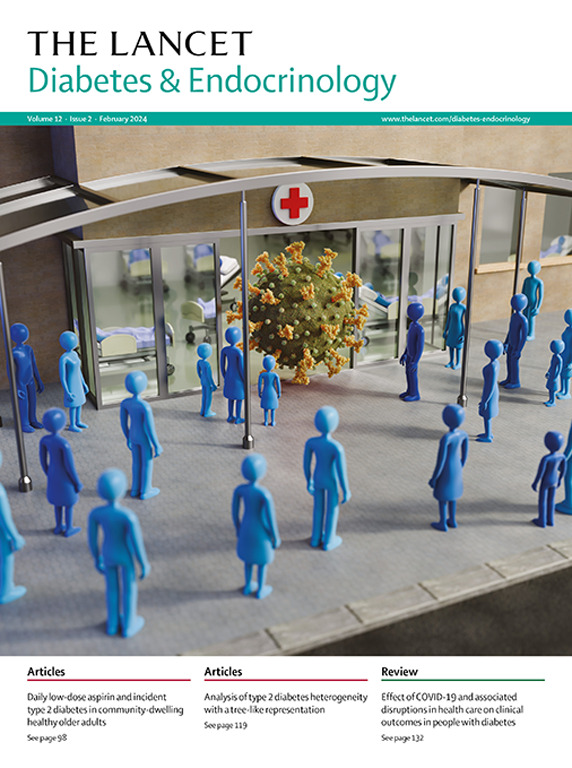补充维生素D预防急性呼吸道感染:分层汇总数据的系统回顾和荟萃分析
IF 44
1区 医学
Q1 ENDOCRINOLOGY & METABOLISM
引用次数: 0
摘要
2021年对37项补充维生素D预防急性呼吸道感染(ARIs)的随机对照试验(rct)的荟萃分析显示,干预的保护作用具有统计学意义(优势比[OR] 0.92 [95% CI 0.86至0.99])。从那时起,已经完成了6项符合条件的随机对照试验,包括1项大型试验(n= 15804)。我们的目的是重新审视补充维生素D和预防急性呼吸道感染之间的联系。方法采用随机效应模型对维生素D预防急性呼吸道感染的随机对照试验数据进行回顾性系统评价和荟萃分析。进行亚组分析以确定维生素D对ARI风险的影响是否根据基线25-羟基维生素D (25[OH]D)浓度、给药方案或年龄而变化。我们检索了MEDLINE、EMBASE、Cochrane中央对照试验注册库、Web of Science和ClinicalTrials.gov,检索时间为2020年5月1日(我们之前荟萃分析的检索截止日期)至2024年4月30日。没有施加语言限制。如果获得研究伦理委员会的批准,并且前瞻性地收集ARI发病率并预先指定作为疗效结果,则任何持续时间补充维生素D的双盲随机对照试验(rct),以及安慰剂或低剂量维生素D对照均符合条件。汇总数据,根据基线25(OH)D浓度和年龄分层,从研究作者处获得。该研究已在普洛斯彼罗(PROSPERO)注册。CRD42024527191)。我们确定了6项新的随机对照试验(19337名受试者)。我们从三个新的rct中获得了16085名(83.2%)参与者的数据,并结合了我们之前meta分析中确定的43个rct中48488名参与者的数据。对于任何维生素D与安慰剂的初步比较,干预对总体ARI风险没有统计学意义上的显著影响(OR 0.94 [95% CI 0.88 - 1.00], p= 0.057;40的研究;61 589人;I2 = 26·4%)。预先指定的亚组分析没有显示年龄、基线维生素D状态、给药频率或剂量大小改变效果的证据。维生素D不影响至少发生一次严重不良事件的参与者比例(OR 0.96 [95% CI 0.90 - 1.04];38岁的研究;I2 = 0·0%)。漏斗图显示左侧不对称(p= 0.0020, Egger检验)。这项更新后的荟萃分析得出了与先前获得的维生素D补充对ARI风险的总体影响相似的点估计,但该影响估计的95% CI现在包括1.00,表明没有统计学上显著的保护作用。本文章由计算机程序翻译,如有差异,请以英文原文为准。
Vitamin D supplementation to prevent acute respiratory infections: systematic review and meta-analysis of stratified aggregate data
Background
A 2021 meta-analysis of 37 randomised controlled trials (RCTs) of vitamin D supplementation for prevention of acute respiratory infections (ARIs) revealed a statistically significant protective effect of the intervention (odds ratio [OR] 0·92 [95% CI 0·86 to 0·99]). Since then, six eligible RCTs have been completed, including one large trial (n=15 804). We aimed to re-examine the link between vitamin D supplementation and prevention of ARIs.Methods
Updated systematic review and meta-analysis of data from RCTs of vitamin D for ARI prevention using a random effects model. Subgroup analyses were done to determine whether effects of vitamin D on risk of ARI varied according to baseline 25-hydroxyvitamin D (25[OH]D) concentration, dosing regimen, or age. We searched MEDLINE, EMBASE, the Cochrane Central Register of Controlled Trials, Web of Science, and the ClinicalTrials.gov between May 1, 2020 (end-date of search of our previous meta-analysis) and April 30, 2024. No language restrictions were imposed. Double-blind RCTs supplementing vitamin D for any duration, with placebo or lower-dose vitamin D control, were eligible if approved by a Research Ethics Committee and if ARI incidence was collected prospectively and pre-specified as an efficacy outcome. Aggregate data, stratified by baseline 25(OH)D concentration and age, were obtained from study authors. The study was registered with PROSPERO (no. CRD42024527191).Findings
We identified six new RCTs (19 337 participants). Data were obtained for 16 085 (83·2%) participants in three new RCTs and combined with data from 48 488 participants in 43 RCTs identified in our previous meta-analysis. For the primary comparison of any vitamin D versus placebo, the intervention did not statistically significantly affect overall ARI risk (OR 0·94 [95% CI 0·88–1·00], p=0·057; 40 studies; 61 589 participants; I2=26·4%). Pre-specified subgroup analysis did not reveal evidence of effect modification by age, baseline vitamin D status, dosing frequency, or dose size. Vitamin D did not influence the proportion of participants experiencing at least one serious adverse event (OR 0·96 [95% CI 0·90–1·04]; 38 studies; I2=0·0%). A funnel plot showed left-sided asymmetry (p=0·0020, Egger's test).Interpretation
This updated meta-analysis yielded a similar point estimate for the overall effect of vitamin D supplementation on ARI risk to that obtained previously, but the 95% CI for this effect estimate now includes 1·00, indicating no statistically significant protection.Funding
None.求助全文
通过发布文献求助,成功后即可免费获取论文全文。
去求助
来源期刊

The Lancet Diabetes & Endocrinology
ENDOCRINOLOGY & METABOLISM-
CiteScore
61.50
自引率
1.60%
发文量
371
期刊介绍:
The Lancet Diabetes & Endocrinology, an independent journal with a global perspective and strong clinical focus, features original clinical research, expert reviews, news, and opinion pieces in each monthly issue. Covering topics like diabetes, obesity, nutrition, and more, the journal provides insights into clinical advances and practice-changing research worldwide. It welcomes original research advocating change or shedding light on clinical practice, as well as informative reviews on related topics, especially those with global health importance and relevance to low-income and middle-income countries. The journal publishes various content types, including Articles, Reviews, Comments, Correspondence, Health Policy, and Personal Views, along with Series and Commissions aiming to drive positive change in clinical practice and health policy in diabetes and endocrinology.
 求助内容:
求助内容: 应助结果提醒方式:
应助结果提醒方式:


